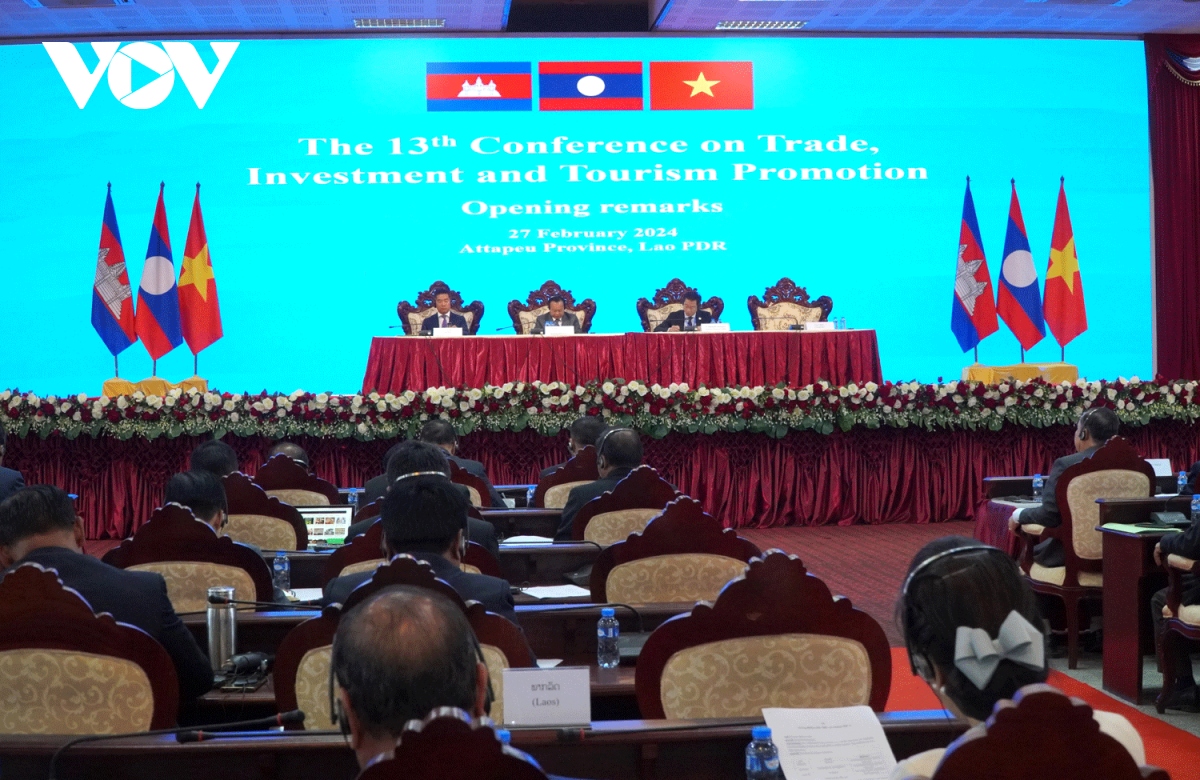Vietnam is currently investing in 110 projects in Laotian and Cambodian provinces that fall within the Cambodia – Laos – Vietnam (CLV) Development Triangle, with total registered investment of more than $3.7 billion, or 24 per cent of project numbers and 44 per cent of total investment in the two countries.
These consist of 65 projects in Laos, with capital of more than $2 billion, and 45 projects in Cambodia, with capital of nearly $1.7 billion. Projects mainly focus on industrial tree cultivation, construction, mining, and hydropower. Many have contributed to the development of communities through contributions to the host country’s budget, created jobs, and improved local infrastructure such as roads, schools, and medical facilities.
This information was released by the Ministry of Planning and Investment (MPI) at the 13th conference on trade, investment, and tourism promotion for the CLV Development Triangle, held in the Lao province of Attapeu on February 27.
The conference was attended by representatives from the 13 provinces within the Development Triangle: Kon Tum, Gia Lai, Dak Lak, Dak Nong, and Binh Phuoc in Vietnam; Sekong, Attapeu, Salavan, and Champassak in Laos; and Stung Treng, Rattanakiri, MondulKiri, and Kratie in Cambodia.
Delegates analyzed the effectiveness of measures conducted to promote investment, trade, and tourism in the three countries as well as within the CLV Development Triangle.
Many believe that investment cooperation between businesses from Vietnam, Cambodia, and Laos, despite yielding results, has yet to match the economic potential, strength, and strategic cooperation between the countries.
Some fields of potential are yet to be properly fostered, such as agriculture, mining, tourism, and energy, and specifically clean energy sources like wind, solar, and hydroelectric.
Participants agreed that there remain certain barriers in promoting investment inside the Triangle, such as limited infrastructure, a lack of investment capital, and complex administrative procedures on goods transportation, customs, and taxation.
Proposing measures to address these shortcomings, Mr. Vu Van Chung, Director of MPI’s Foreign Investment Agency, said each country must introduce policies to encourage investment in their underdeveloped socio-economic zones.
He also suggested the formation of large-scale material zones inside the Triangle, to encourage investors to come and purchase materials, build production and processing facilities, and export products along roads connecting the provinces with border gates and then onwards to Vietnam’s seaports, guaranteeing the sustainable development of the CLV Development Triangle and protecting the interests of its three member countries.
Mr. Chung also recommended that State agencies accelerate the implementation of cooperation agreements to facilitate investment and business activities; soon draft new deals necessary for labor, investment, and business partnerships; upgrade and complete infrastructure, especially transport, electricity, water, and irrigation facilities; and simplify customs procedures for sending human resources, goods, equipment, and vehicles via border gates.
The five Vietnamese provinces within the Triangle have also attracted 521 FDI projects from 30 countries and territories with total registered capital of over $6 billion.
According to MPI, these provinces have also invested in 48 projects in Laos and Cambodia with capital of $1.91 billion, including 41 projects with $1.65 billion within the Triangle.

